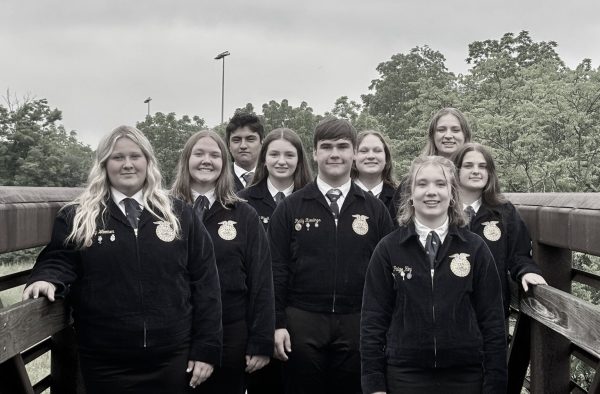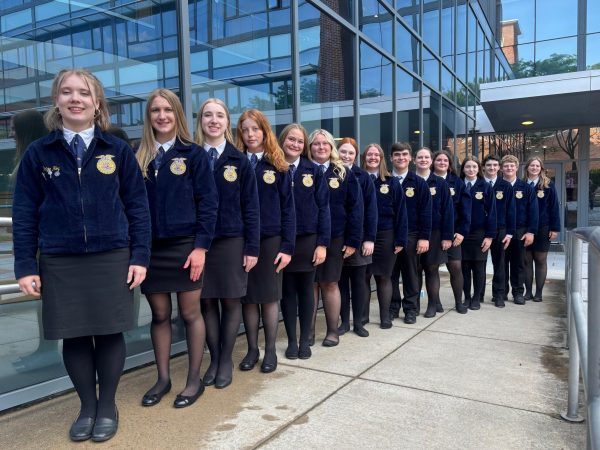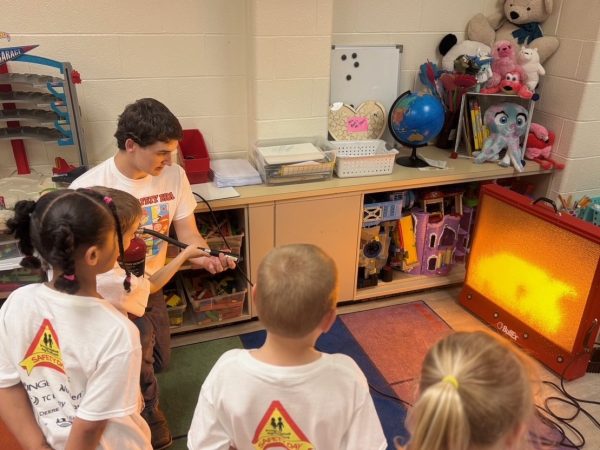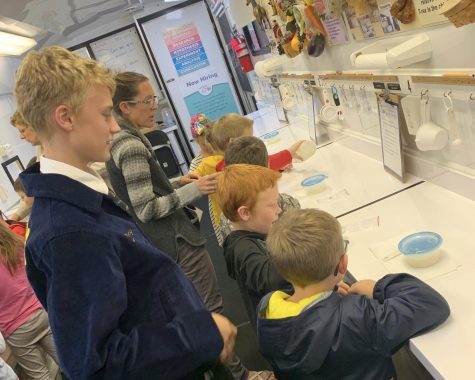Tyrone Junior’s Speech on Honeybee Colony Collapse Disorder Wins Local Award

Haylee Blowers
Students in the Natural Resources and Ecology course at Tyrone Area High School were challenged to write a conservation speech about something impacting their world.
Tyrone junior Haylee Blowers speech about honeybee colony collapse disorder won the local competition in March and moved on to the FFA South Central Regional Leadership Development Events on April 24 in Mechanicsburg, PA. Though Blowers speech did not move to the state competition in June, she represented her chapter and area with pride.
Through her speech Blowers hopes to show others the importance of saving bees for human survival.
This is Blower’s first year in Agricultural Education and participating in FFA events.
“Sometimes students start in the program later on in their high school years, but they still have the opportunities to develop leadership, communication, and collaboration skills,” said Tiffany Hoy, TAHS Agricultural Educator and FFA Advisor.
Every student who competes in an FFA prepared public speaking event must write their own manuscripts with data and evidence supporting their statements, speak for a specific amount of time, answer questions from the panel of judges, and have their manuscripts judged and counted into the scoring.
Here are some excerpts from Haylee Blower’s written FFA Conservation prepared speech:
“The population levels of more than 700 North American bees are dwindling because of habitat loss and the pesticide use. But that is just the start. According to an article in Time Magazine written by Justin Worland, 1,400 bee species were evaluated and more than half of those species are on the decline (2017, March). Some of the main reasons as to why their population is declining are because of the industrial agriculture, the parasites/pathogens, and the climate change.
The Organic Consumers Association states that honey bees are responsible for pollinating 14 billion dollars in the food crops, in the United States. This includes fruits, nuts, and lots of vegetables. In an article named Industrial Agriculture is killing U.S. honeybees by David Ottoson, it vaguely states that many scientists have found evidence in almost all known bee viruses found in the few surviving bees that their immune systems may have collapsed (2007, June). Industrial agriculture is the form of modern farming that refers to the industrialized production of livestock, poultry, fish, and crops. So somewhere along the lines, fungicides play a big role in why industrial agriculture is killing the bees. Fungicides are the chemicals used to kill the fungus that grows on the crops such as corn, and beans. Another website called Green Peace states “Pollinators cannot escape the various and massive impacts of industrial agriculture.”
Moving onto the parasites that are in the honey bees that are killing them are called the Varroa destructor. Another known name for this parasite is the “vampire mite” because they feed on drinking the bees’ blood. When the bees are bitten, they are infected with an infection. This infection quickly leads to illnesses and diseases, then death of course. Jeff Pettis, a researcher at the Agriculture Department’s Bee Research Laboratory refers to this as a “modern honey bee plague”. The mite was introduced in the United States in the late 1980’s and has basically been killing the honey bees ever since. However, in Asia, the honey bees have been able to adapt to the counterattacks from the mites. Unfortunately, American honey bees are not doing so well at adapting to the infections.
The climate is another big factor responsible for this problem. The climate has increased in the U.S. about 1.5 degrees Fahrenheit warmer than in the 1900’s. So this causes many plants and animals in the northern hemisphere to shift their range north. But the bees, however, aren’t pushing more northward like the other species. The bees are pushing their way in more of a southern direction. In the result of this, it leaves more and more habitat space for them to live. According to climatedesk.org since the 1970’s the result of global warming the bees have lost basically 200 miles off the southern end of a historic range in the U.S. and in Europe. This is a trend that is continuing to happen at a rate of 5 miles every year.
One third (1/3) of food is pollination-dependent, and they pollinate 70 types of crops. Apples, oranges, cranberries, lemons, limes, berries, cucumbers, carrots, almonds, etc. Other ways bees are important to us humans, is that they make 6,000 tons of honey as well.”








Rocco Clark • May 11, 2018 at 11:54 am
Good job Haylee
beverly • May 4, 2018 at 9:49 am
cool